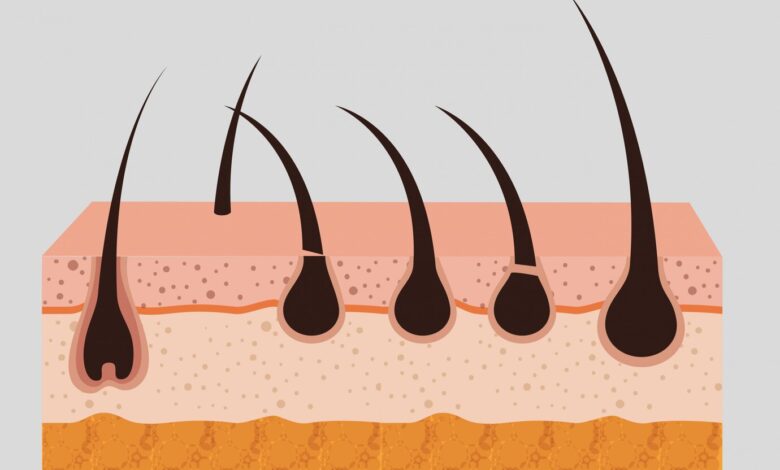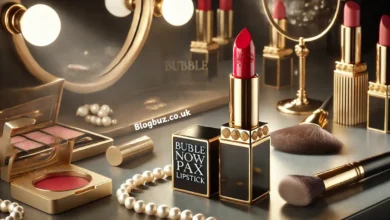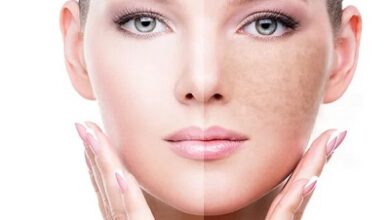The Molecule Behind the Hype – What GHK-Cu Tells Us About Aging and Regrowth

What if the secret to healthier skin and fuller hair was already inside your body? GHK-Cu, a naturally occurring copper peptide, has gained attention for its remarkable ability to support tissue repair, hair growth, and skin regeneration.
First discovered decades ago, it’s now making a comeback as science uncovers more about its role in aging and cellular renewal. Let’s explore what GHK-Cu really does, how it works, and why it’s becoming a key player in the conversation about regrowth and longevity.
What Is GHK-Cu, and Why Is It Trending Now?
GHK-Cu is a naturally occurring copper peptide found in human plasma, saliva, and urine. Discovered in the 1970s, it’s made up of three amino acids bound to a copper ion. While its biological role was initially associated with wound healing, its potential has expanded as scientists began noticing its broader effects on skin regeneration, hair growth, and inflammation reduction.
In recent years, GHK-Cu has seen a resurgence in interest thanks to growing awareness of peptides in both the health and cosmetic industries. Social media, wellness influencers, and clinical researchers alike have drawn attention to its promise as a regenerative compound.
It’s now commonly found in topical formulations aimed at improving hair density, skin elasticity, and overall signs of aging—without the harsh side effects that come with many pharmaceutical options.
How Does GHK-Cu Work in the Body?
GHK-Cu interacts directly with human cells to influence gene expression. Specifically, it upregulates genes associated with repair and regeneration while downregulating those linked to inflammation and tissue breakdown. This means it doesn’t just mask symptoms—it supports underlying biological processes that improve how the skin and scalp function over time.
What makes GHK-Cu stand out is its ability to stimulate collagen and glycosaminoglycan production, key components of firm, hydrated skin. It also boosts blood vessel formation (angiogenesis), which improves nutrient delivery to tissues, including hair follicles. These mechanisms work together to encourage healthy skin turnover and potentially reverse visible signs of aging from the inside out.
Hair Regrowth – Hope or Hype?
GHK-Cu is increasingly studied and discussed for its possible effects on hair regrowth, particularly in cases of thinning or shedding due to stress, aging, or inflammation. It appears to promote the health of dermal papilla cells—key structures at the base of hair follicles that control hair cycling. Healthier follicles are more likely to remain in the growth (anagen) phase for longer periods, resulting in fuller, thicker hair over time.
While there’s still a need for larger clinical trials, preliminary research and anecdotal reports are promising. Many users report noticeable improvements when GHK-Cu is used consistently, whether through topical application or in clinical settings where GHK-Cu hair growth injections are administered directly into the scalp.
Results may be further enhanced when combined with other techniques like microneedling or low-level laser therapy. Unlike hormone-altering drugs or vasodilators, GHK-Cu works more gently by supporting the follicle environment rather than forcing it into action.
However, for individuals experiencing more advanced or persistent hair loss, a dutasteride prescription may offer a more potent solution. Dutasteride is a clinically backed oral treatment that blocks DHT—the hormone most often linked to pattern baldness—helping to stop hair loss at its root and encourage regrowth in stubborn areas.
Skin Benefits and Anti-Aging Properties
GHK-Cu is perhaps best known in dermatological circles for its skin-rejuvenating properties. Studies have shown that it can increase collagen production and improve skin elasticity, leading to a reduction in fine lines, improved firmness, and better overall texture. It also supports wound healing and may help fade discoloration or scarring over time by promoting a balanced inflammatory response.
Unlike harsher ingredients often found in anti-aging products, GHK-Cu is generally well-tolerated and works by enhancing the skin’s natural repair mechanisms. As a result, it has found its way into skincare routines aimed at both prevention and recovery. Whether dealing with sun damage, signs of aging, or minor scarring, GHK-Cu offers a science-backed approach that works with the body rather than against it.
What to Know Before Trying GHK-Cu Products
Not all GHK-Cu products are created equal, and purity plays a significant role in how effective a formulation can be. Low-quality or poorly formulated products may contain ineffective concentrations or unstable compounds that degrade before they reach the skin or scalp.
When evaluating a product, it’s important to look for clearly listed ingredients and information about stability, pH balance, and peptide concentration.
Topical applications are the most accessible form of GHK-Cu, and they’re commonly used in serums, creams, or sprays designed for the scalp or skin. While some practitioners offer injectable forms, these are typically reserved for clinical settings and are not necessary for most users. Consistency and proper storage (such as refrigeration, when recommended) also play key roles in ensuring that the peptide remains effective throughout its use.
The Bigger Picture – A Glimpse Into the Future of Regenerative Care
GHK-Cu represents a growing category of molecules that work at the intersection of biology and longevity science. As interest in regenerative medicine expands, compounds like this are becoming focal points for developing non-invasive, supportive treatments that enhance quality of life as we age. Their potential to slow or reverse damage, rather than merely treat symptoms, is shifting how people approach aging.
The broader implication is that health optimization may move increasingly toward biomimetic solutions—molecules that replicate or enhance natural functions already found in the body. GHK-Cu fits neatly into this trend, offering a preview of how personalized wellness and targeted therapies might evolve. While more research is still needed, its growing popularity signals a wider shift in how aging is understood and addressed.
Conclusion
What if aging gracefully isn’t just about what we avoid, but what we actively support within our own biology? GHK-Cu offers a compelling look at how targeted, naturally occurring molecules can aid in regrowth, repair, and resilience—without drastic interventions.
As research continues, it stands as a promising example of how science and wellness are converging to offer smarter, more supportive ways to care for our skin, hair, and health.




